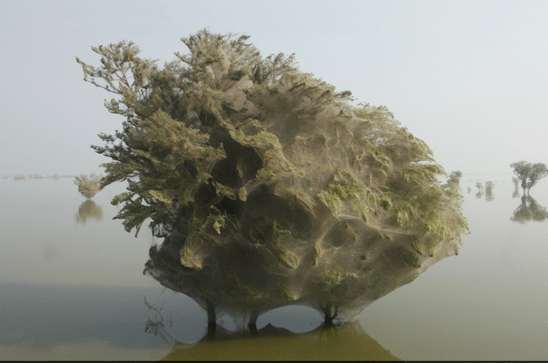
On August 21, 1986, the carbon dioxide at the bottom of the lake suddenly erupted all at once, 1.6 million tons of it, and released a cloud of carbon dioxide from the lake. There are only three such lakes known on Earth. Carbon dioxide is 1.5 times denser than air, which is why it will not rise from the bottom of a lake, unless shoved up by another force.

This changes the water into carbonic acid. Under the bed, a magma chamber is leaking carbon dioxide into the water. It is not very large, only 1.2 miles by 0.75 miles, but it is quite deep, 682 feet. Lake Nyos is in a very remote area of the Cameroonian jungle. The criteria required for one to occur make them very rare. Elmo’s fire, maelstrom, waterspout, fog tsunami, meteotsunami.Limnic eruptions are one of the most bizarre natural disasters known. Makes a great gift.īottom line: Five weird ocean phenomena: St. The 2019 lunar calendars are here! Order yours before they’re gone. A maelstrom can be dangerous due to powerful currents that occur below the surface, which can pull surrounding objects into its vortex. Its name comes from the Dutch words malen (to whirl or grind) and strom (stream).

Image via Jeff Schmaltz, MODIS Rapid Response Team, NASA/GSFC.Ī maelstrom is a strong whirlpool that forms when opposing currents meet to form swirling water. Fair weather waterspouts form in light wind conditions so they normally move very little. While tornadic waterspouts develop downward in a thunderstorm, a fair weather waterspout develops on the surface of the water and works its way upward. The tornadic variety are more dangerous than fair weather waterspouts, which generally are not associated with thunderstorms, and usually form along the dark flat base of a line of developing cumulus clouds. They are associated with severe thunderstorms and are often accompanied by high winds and seas, large hail, and dangerous lightning. Tornadic waterspouts are tornadoes that form over water, or move from land to water. Waterspouts fall into two categories: fair weather and tornadic. Image via National Weather Service/Greg O’Neal of Hiram, Georgia.Ī waterspout is a spinning column of air and mist that forms on lakes, rivers, and at sea. Semi-enclosed water bodies like harbors, inlets, and bays can greatly intensify a meteotsunami. Like an earthquake-generated tsunami, a meteotsunami affects the entire water column and may become dangerous when it hits shallow water, which causes it to slow down and increase in height and intensity. Development of a meteotsunami depends on several factors, such as the intensity, direction, and speed of the air pressure as it travels over a water body. These disturbances can generate waves in the ocean that travel at the same speed as the overhead weather system. Meteotsunamis have characteristics similar to earthquake-generated tsunamis, but they are caused by air-pressure disturbances often associated with fast-moving weather systems, such as squall lines. Weather system that caused a meteotsunami in New Jersey, June 2013.


When conditions are just right in late spring or early summer, the condensation from warm air merging with cool ocean water can create this dramatic effect. Jim Freda, Manasquan Inlet, New Jersey.Īt first glance, this jarring sight looks like a giant tsunami rolling in from the ocean, but it’s actually a massive amount of fog. Erasmus of Formia, one of the two patron saints of sailors. When a sharp object (such as a ship’s mast) comes in contact with an extraordinarily high electrical field and a large number of electrons, the electrons can glow in various colors, like a neon sign, resulting in this rare phenomenon. Elmo’s Fire is a colorful discharge of atmospheric electricity that typically occurs during a thunderstorm. Image via Senior Airman Brian Kelly, U.S.


 0 kommentar(er)
0 kommentar(er)
